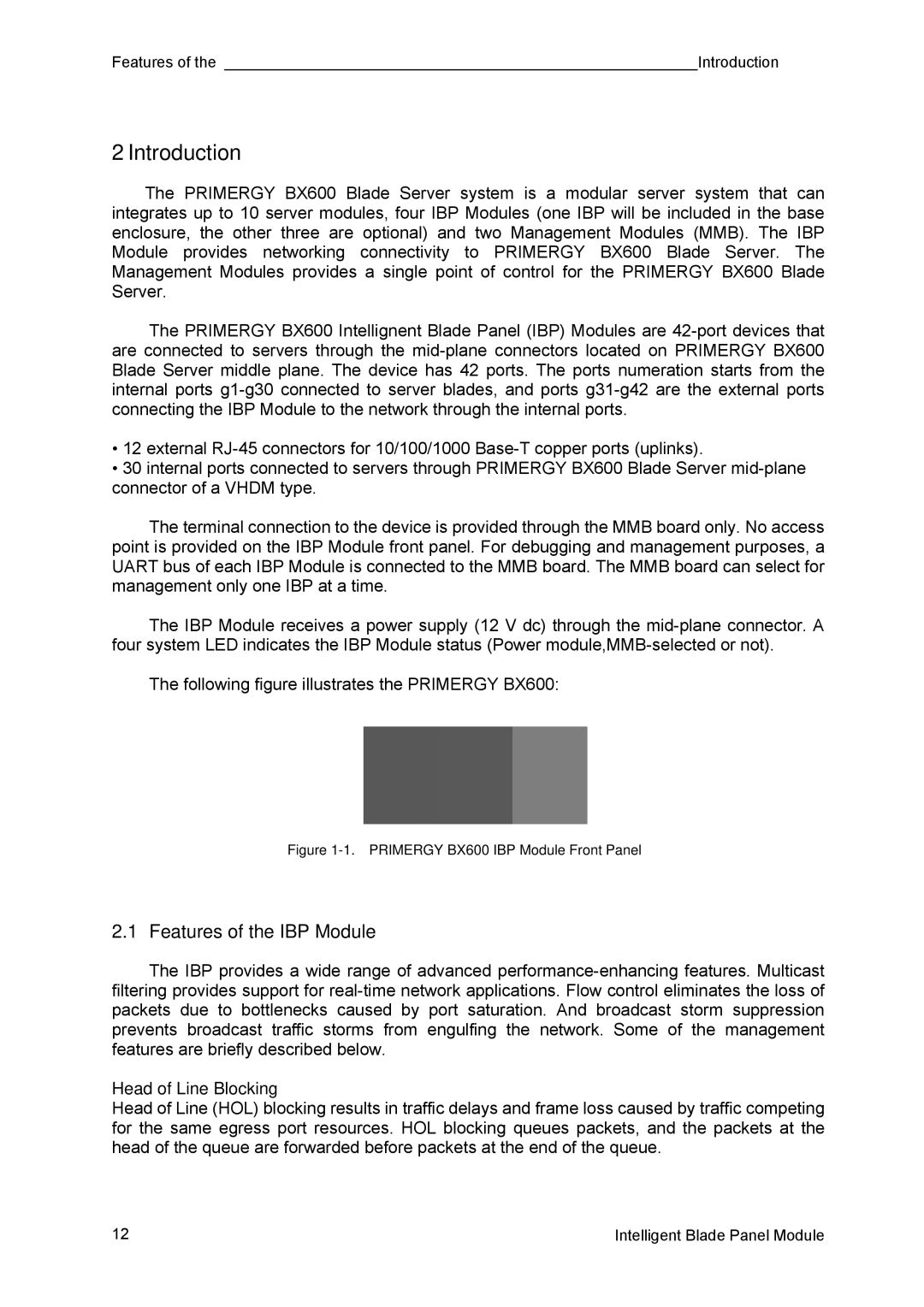
Features of the |
| Introduction |
2 Introduction
The PRIMERGY BX600 Blade Server system is a modular server system that can integrates up to 10 server modules, four IBP Modules (one IBP will be included in the base enclosure, the other three are optional) and two Management Modules (MMB). The IBP Module provides networking connectivity to PRIMERGY BX600 Blade Server. The Management Modules provides a single point of control for the PRIMERGY BX600 Blade Server.
The PRIMERGY BX600 Intellignent Blade Panel (IBP) Modules are
•12 external
•30 internal ports connected to servers through PRIMERGY BX600 Blade Server
The terminal connection to the device is provided through the MMB board only. No access point is provided on the IBP Module front panel. For debugging and management purposes, a UART bus of each IBP Module is connected to the MMB board. The MMB board can select for management only one IBP at a time.
The IBP Module receives a power supply (12 V dc) through the
The following figure illustrates the PRIMERGY BX600:
Figure 1-1. PRIMERGY BX600 IBP Module Front Panel
2.1 Features of the IBP Module
The IBP provides a wide range of advanced
Head of Line Blocking
Head of Line (HOL) blocking results in traffic delays and frame loss caused by traffic competing for the same egress port resources. HOL blocking queues packets, and the packets at the head of the queue are forwarded before packets at the end of the queue.
12 | Intelligent Blade Panel Module |
